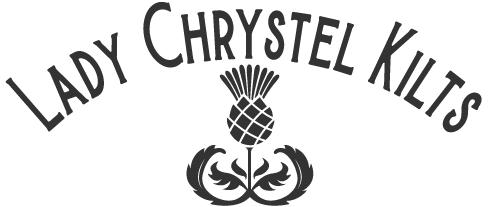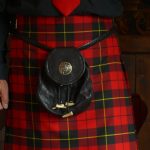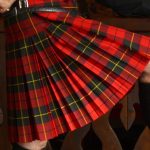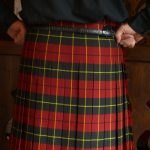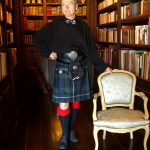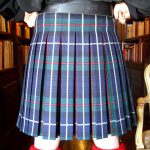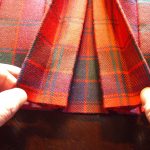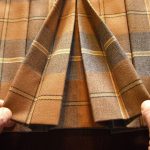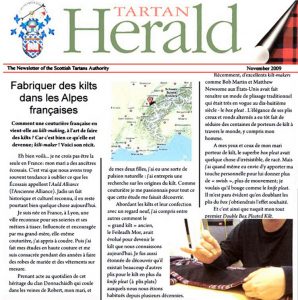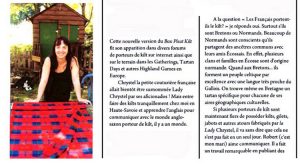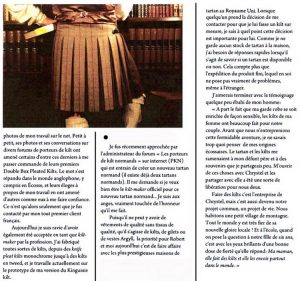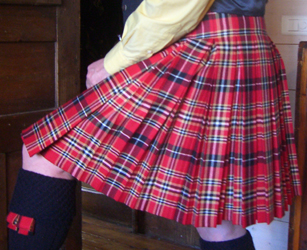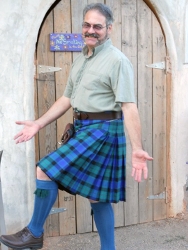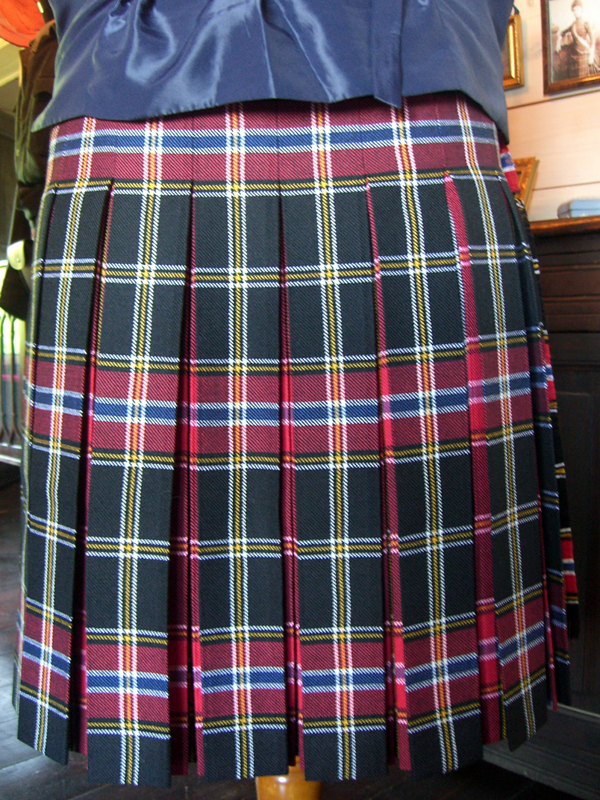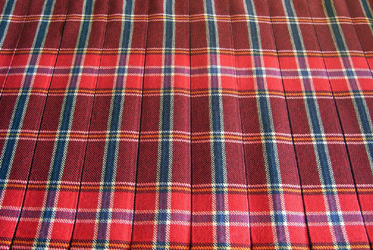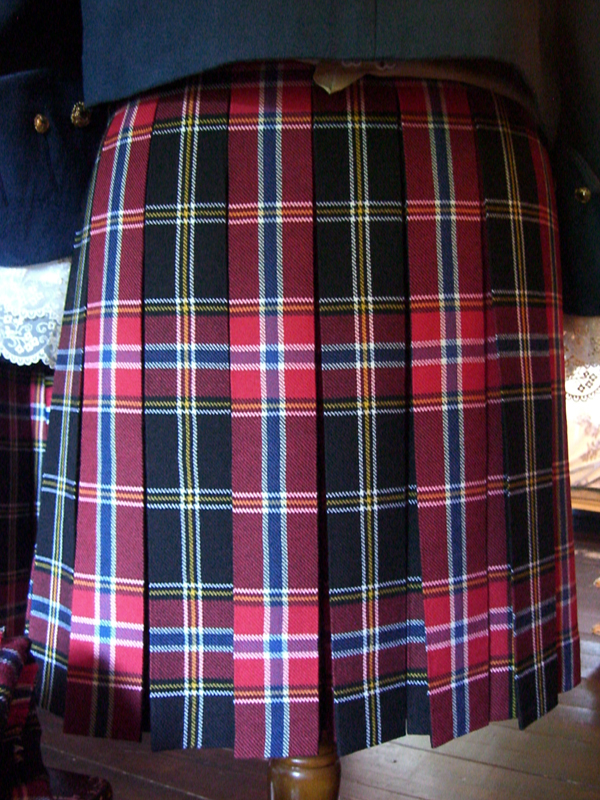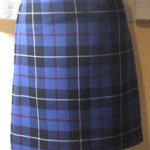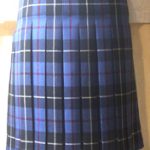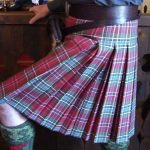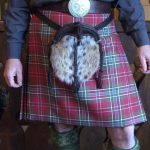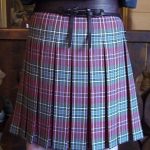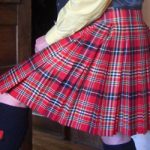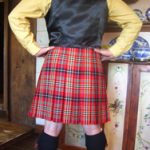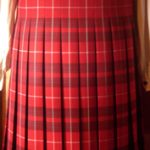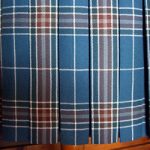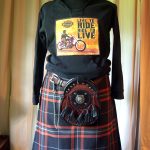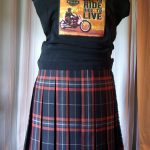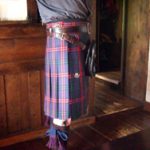

To get the picture...
In the course of it’s evolution, the great belted plaid or Feileadh Mor evolved into the kilt that we are all familiar with today. Different types of pleating of the tartan also came to be applied over time. For decades, only the knife pleat was used .
In recent years, excellent kiltmakers such as Matthew Newsome and Bob Martin before him have brought back into fashion a pleat that was popular in the XVIIIth century, the box pleat.
It’s stylishness quickly seduced hundreds of kilt wearers. It is elegant, light, and… thrifty : Indeed, it requires a mere four yards of tartan .
The end of a myth: It is acknowledged today that it is no longer necessary for a “real kilt” to use the sacred number of 8 yards of fabric
But in my view as well as that of my kilt-wearing man (a descendant of clans MacKinnon, Donnachàidh, Lindsay and Montgomery) there was still a little something missing from the superb Box pleat to seduce us quite completely.
Why a Double box pleat ?
This little something is what is called the “swish” or “swagger”; that is to say the movement, flow, and body that the Knife Pleat offer.
By studying different pleating possibilities (drawings above) the idea came to us that by making a kilt with a doubled box pleat, we would obtain the desired effect.
Deal!
Thus was born my very first Double Box Pleated Kilt, whose qualities have been applauded by kilt wearers around the world.

